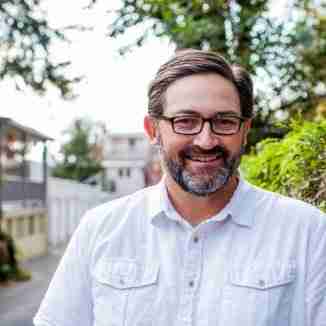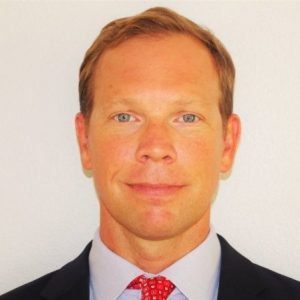
In Conversation: Rodeina Challand, VP Scientific Affairs, BioFactura
BioFactura is a leading biodefense and biosimilars biotech located in Frederick, Maryland. The company was founded by former Human Genome Sciences team members, led by Dr. Daryl Sampey, back in 2003. Dr. Jeffrey Hausfeld joined the team as the company’s Chief Medical Officer and Chairman of the Board in 2014.
Since then, BioFactura has grown significantly, expanding its footprint beyond its early days at the Frederick Innovation Technology Center (FITCI) and into its own GMP/R&D facility at Riverside Research Park in Frederick, which is also home to the NCI, SAIC, and Charles River Labs, to name just a few life sciences companies that call the area home.
BioFactura has several promising biosimilars in development and just recently announced the activation of a $16M option with the Biomedical Advanced Research and Development Authority (BARDA) for the development of the company’s antibody cocktail that targets the virus that causes smallpox and monkeypox. This funding will also support BioFactura’s Investigational New Drug Application for the potential treatment. The $16M option is part of a larger prime contract with BARDA valued at up to $68.2M.
These recent achievements and milestones have moved BioFactura into a new phase, sparking new hires to build out the infrastructure and systems required to drive the company’s pipeline forward.
A key recent hire was biosimilars and scientific affairs expert Rodeina Challand, who joined the BioFactura team as its new VP of Scientific Affairs in late 2021. We caught up with Challand to discuss her background, the biosimilars market landscape, and why she’s excited about what’s next for BioFactura.
Talk to us about your career path that led you to joining BioFactura as VP of Scientific Affairs.
I am Lebanese and came to the UK in 1978. Even as a student in Lebanon I was fascinated with science. My family wanted me to pursue an MD but I was more interested in pursuing a degree in the sciences. I studied at London University and became very intrigued by research–the lab times were the fun times for me. Research gripped me.
My first post was with a cancer research charitable organization. That matched my nature; I wanted to work at a charitable organization to start. Later, I took a break to raise my family and then, when I restarted my career, I went into pharma. I gradually moved up the ladder from a scientific officer to management, changed companies, and eventually became a Global Director of Clinical Development.
Joining Faulding UK in 2000 as Manager of Medical Affairs was a pivotal point in my career because it was the first time I joined a generics house. When I joined there wasn’t much of a department, so my role was to build right from the ground up. In 2001 Mayne Pharma acquired Faulding which was then acquired by Hospira in 2007 to become one of the biggest generics companies. While I was with Mayne/Hospira we developed and commercialized our first biosimilar. I was with Mayne and Hospira for 11 years and progressed to be Global Director Clinical Development, where I was responsible for the Biosimilar franchise.
Around 1998 Mayne, which specialized in oncology, and other generic companies realized that biologics were advancing therapies with life-changing outcomes and their use was expanding with the potential of eroding generic sales. Many blockbuster biologics were coming off patent, but there was no pathway to developing copy biologics. In fact, there were many press releases saying that it was impossible to create a copy biologic.
I was in the right place at the right time. I was the head of medical affairs and they asked me to build a clinical department for research. I never looked back. While I was with Mayne/Hospira I was also involved in the development of biosimilar guidelines with the biosimilar working groups, the European Medicine Agency and the European Commission.
In 2011, I moved on to a clinical research organization to see the other side of the business and learned quite a bit there. I was exposed to many other companies and a lot of other products. I went on to consult for a few years, mainly working with companies and regulators in developing countries.
Why did you decide to join BioFactura?
I started as a consultant with BioFactura. They liked my passion and drive and offered me a full time role. Part of the reason I joined BioFactura was that the company is right in the building stage, which is what I truly love to do.
When I first met with Dr. Sampey and Dr. Hausfeld, you could tell they were hungry to build and were very passionate about biosimilars. We share this passion to bring these life-changing, cost-effective treatments not to the select few that can afford them, but to everyone.
I also love that BioFactura is thinking globally—we are not U.S.-centric. We want our products in every country and in particular, we want to improve access to biologics in developing countries where currently only the rich can afford biologics.
BioFactura is a leading developer of biosimilar drugs. Can you explain to our audience the difference between biosimilars and generic products?
Biosimilars sometimes get confused for generics, but there are key differences between the two. A generic is a synthetic, simple molecule that’s designed to be exactly the same as the originator drug. It is an exact copy; you can do this because it is synthetic and the structure is simple.
Biologics are proteins made from living organisms and are much more complicated; there are multiple layers to consider. To manufacture a biosimilar you have to know what the protein looks like, how the proteins behave inside different environments, and how it folds. You just can’t make an exact biologic copy. That’s why it is called a biosimilar. Technology has advanced so much that we can now develop fingerprint-like copies of the originator products, but they by nature will not be completely identical.
Those are the essential differences.
Generics and biosimilars do share one important characteristic that’s so important: They both bring down the cost of drugs and allow greater access to medicines.
Biosimilars uptake in the U.S. and EU has increased over the past handful of years but has not nearly reached its full market potential. What are the barriers to stronger uptake in the U.S.?
The resistance you’re seeing in the U.S. is similar to what happened when we launched the first biosimilars in Europe.
The biggest barrier to greater uptake is education. It is the prevailing perception that biosimilars are inferior; this view is held by payers, doctors and patients alike. For example, the AMGEN brand product is seen as the ‘gold standard’, but then I tell the doctors that AMGEN is also making biosimilars so that argument doesn’t stack up anymore. This misperception was created by Big Pharma. They spread the ‘news’ that biosimilars are inferior and we don’t know how to make them.
In Europe, biosimilars education was pushed by the regulators. This is so important. Not only did they approve this biosimilar product, but they were also committed to supporting it. The regulators ran various workshops and provided education materials to stakeholders. They became the teachers.
Biosimilar companies in Europe at the time (and today this is still the case) did not have the sales force or the connections with buyers to push back against Big Pharma. The regulators stepped up in Europe. And now the FDA in the U.S. is starting to do this as well—they are beginning to develop biosimilar education materials and have been conducting many workshops to educate stakeholders and the public at large. In September the FDA is running a workshop open to the public called ” Increasing the Efficiency of Biosimilar Development Programs,” with the main goal to encourage biosimilar developers.
Another big problem in the U.S. is the fragmented payer environment. Everyone is trying to get a cut, so the patient doesn’t see the cost benefit.
Interchangeability is an important barrier as well. In order to switch a patient from a brand name drug to a biosimilar, the biosimilar product must be approved as an interchangeable biosimilar as required by the law. Demonstrating interchangeability requires additional clinical studies that are costly and time consuming. Only Big Pharma can largely afford to do this. In addition, interchangeability in the U.S. creates the perception that an interchangeable biosimilar is superior to other biosimilars, adding to even more confusion in the market.
There are many complex payer issues, regulatory barriers, and Intellectual Property (IP) restrictions in the U.S. that are hindering biosimilars uptake. These are only a few issues, but we are confident that the continuing education by biosimilar companies and regulators, including the FDA, will help payers, doctors, and patients to better understand the value of biosimilars to the healthcare system as a whole.
What would more biosimilars options mean to U.S. patients and the U.S. healthcare system as a whole?
4% of patients in the U.S. take biologics. Only 4%. Yet that equates to 40% of the drug budget. Access to biologics in the U.S. is limited because of cost, with devastating outcomes.
For example, there are many cases in the U.S. of Type 1 diabetic patients dying due to rationing their insulin because of high costs. Insulin was discovered in 1920 by four scientists at The University of Toronto; insulin was first tested in humans in 1922. The scientists sold their patents to the University for $1.00 each, one famously saying “Insulin does not belong to me, it belongs to the world.”
Put simply, biosimilars would allow greater access to life-changing and lifesaving medicines.
The U.S. health system is not for ALL right now, but biosimilar access for first time biologics users could truly make better care accessible to everyone and save lives.
What are some of BioFactura’s leading biosimilar pipeline candidates and what are the next phases of their development?
We have a number of biosimilars in our pipeline. We are targeting a niche of blockbuster drugs that are soon to come off patent, including our lead biosimilar candidate for Stelara, as well as other biosimilars for Simponi, Soliris, Benlysta, and Synagis. Current innovator revenues for these products is around $24B.
We also have two biodefense products in early stage development, including therapeutics for smallpox and Marburg virus disease. These two therapeutics are being developed with support from BARDA and the United States Army Medical Research Institute of Infectious Diseases (USAMRIID).
How would you characterize what it’s like to be part of the BioFactura team and culture?
We have amazing scientists and the company is very science-driven, but we are also at a pivotal point where we have to take important next steps. This company has done remarkable work, but we now have to build our infrastructure. We are moving from an early phase company to becoming a pharma company.
This is so exciting for everyone here. We’re on the cusp of great things. Building and getting my hands dirty is what I love and what I’m passionate about, and this is what I do on the clinical and regulatory side. There’s so much energy and wonderful science here; now we have to harness that in the right way.
This is such a great opportunity for me to make a difference. BioFactura’s future is bright and our work could make such a powerful impact on global health, and I want to be part of it.
- About the Author
- Latest Posts
Steve brings nearly twenty years of experience in marketing and content creation to the WorkForce Genetics team. He loves writing engaging content and working with partners, companies, and individuals to share their unique stories and showcase their work. Steve holds a BA in English from Providence College and an MA in American Literature from Montclair State University. He lives in Frederick, Maryland with his wife, two sons, and the family dog.




